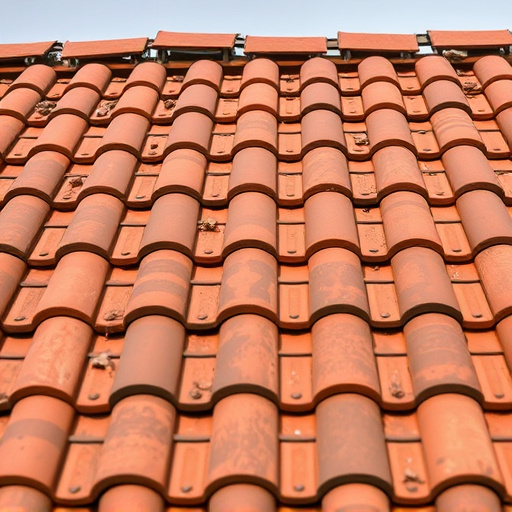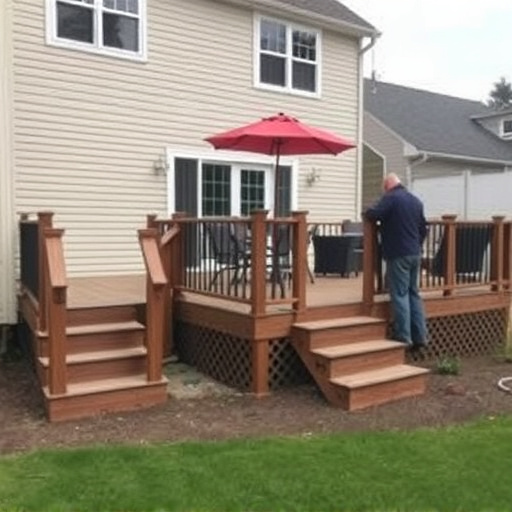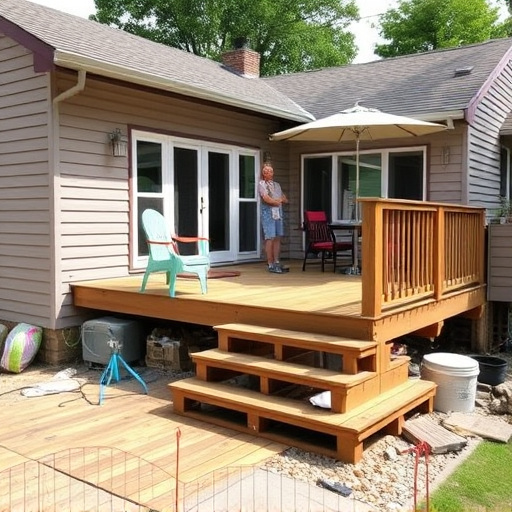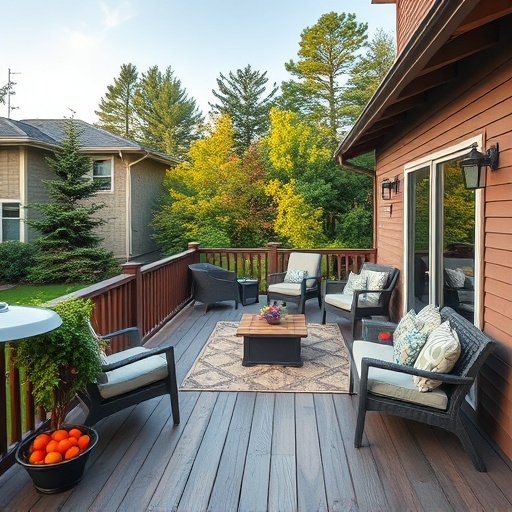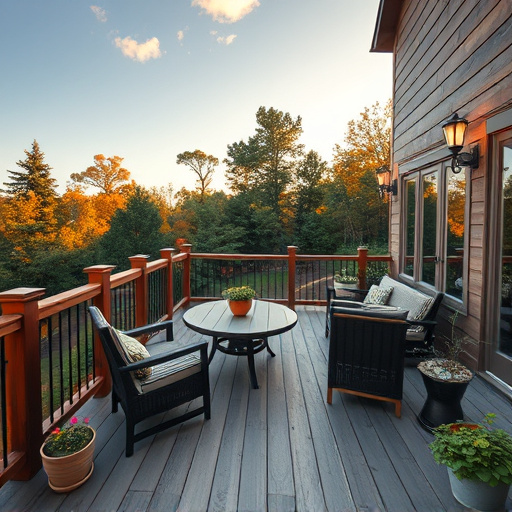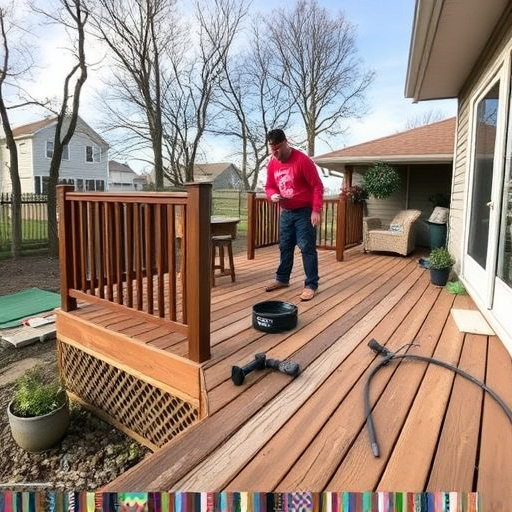Before starting your deck framing project, assemble essential materials like wooden beams, joists, posts, brackets, fasteners, and a suitable foundation. Equip yourself with basic tools such as a hammer, saw, drill, level, and measuring tape, plus advanced tools for precise cuts. Prioritize high-quality, resilient decking materials to ensure durability. Proper preparation involves sourcing the right components for a solid foundation. Use traditional treated lumber or composite alternatives based on budget, climate, and preference. Consult a roof expert for structural integrity guidance.
Looking to build your dream deck but don’t know where to start? This comprehensive DIY guide takes you through the basics of deck framing, from gathering essential tools and materials to planning, measuring, and assembling your new outdoor oasis. We’ll walk you through each step, ensuring a sturdy, durable structure that enhances your living space. Learn how to choose the right lumber, create precise measurements, and construct a frame that’s both functional and beautiful. Get ready to transform your backyard!
- Gathering Materials and Tools
- – List of essential tools needed for deck framing
- – Types of lumber and other materials to choose from
Gathering Materials and Tools
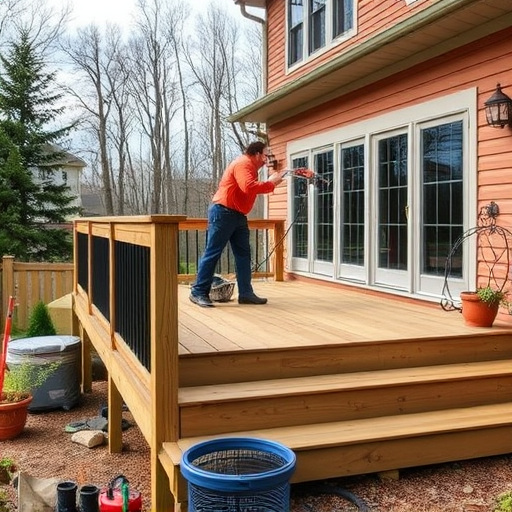
Before you begin your deck framing project, it’s crucial to gather all the necessary materials and tools. This includes wooden beams for the structure, joists for supporting the decking, and posts for stability. Don’t forget the important components like brackets, fasteners, and a suitable foundation for your deck. When it comes to tools, you’ll need basic equipment such as a hammer, saw, drill, level, and measuring tape. A circular saw or table saw can also be handy for cutting wooden elements accurately.
Professional siding and roofing solutions are not typically required for deck framing, but having high-quality materials ensures a robust and durable structure. Consider the long-term benefits of using resilient decking materials that can withstand various weather conditions. Remember, proper preparation is key to a successful DIY deck framing project, so take your time to source the right components and tools before you begin construction.
– List of essential tools needed for deck framing
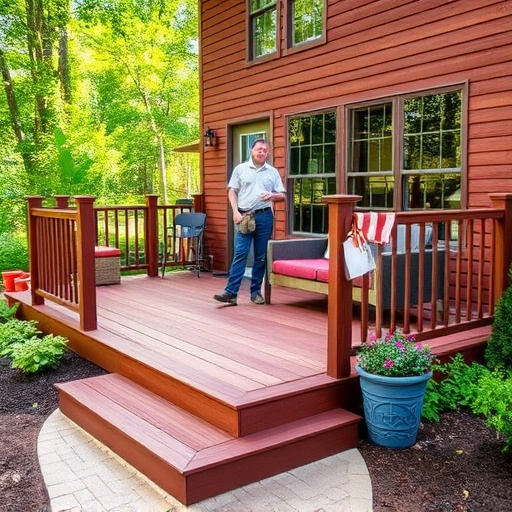
Before you begin your deck framing project, ensure you have a comprehensive set of tools tailored for this task. A well-prepared toolkit is half the battle won in any DIY endeavor. For deck framing, you’ll require a combination of power and hand tools. Essential items include a circular saw (for cutting lumber accurately), a hammer (for driving nails and setting planks), a tape measure (to ensure precise dimensions), and a level (to maintain the deck’s stability). Don’t overlook safety gear: protective eyewear, gloves, and ear protection are must-haves to safeguard against flying debris and loud machinery.
Additionally, consider investing in a stud finder to locate wall studs for secure fastening points. A tool belt or bag will keep your equipment organized, making the job more manageable. For professional-grade results, opt for high-quality tools from reputable brands, especially if you’re tackling larger projects. Remember, proper tools are key to achieving a sturdy and aesthetically pleasing deck—a valuable asset for any home, whether it’s a cozy residential or a commercial property seeking an upgrade with home service solutions.
– Types of lumber and other materials to choose from
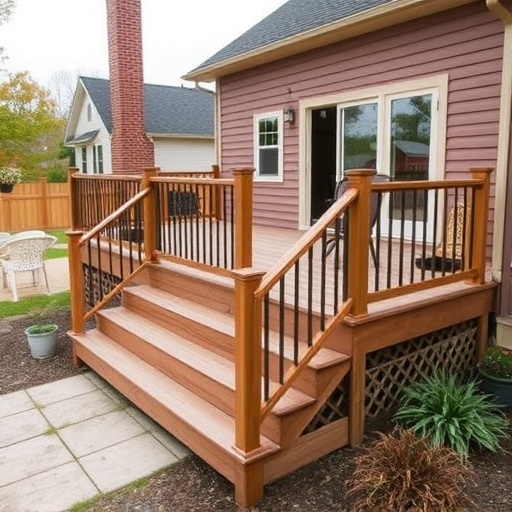
When it comes to deck framing, the choice of materials is crucial for a sturdy and durable structure. The most common type of lumber used in deck building is treated pressure-resistant wood, such as cedar or pressure-treated pine. These options are ideal due to their natural resistance to rot and insects, ensuring your deck stands the test of time. For those seeking an eco-friendly alternative, composite lumber is a popular choice, offering the same durability without the need for chemical treatments.
When planning your deck framing project, consider factors like budget, climate, and personal preference. For instance, if you live in an area prone to storms and high winds, opting for stronger, more robust materials like treated lumber or composite decking might be a home service solution. Moreover, consulting with a roof expert can provide valuable insights into the best materials for your specific needs, especially when dealing with structural integrity and storm damage repair.
DIY deck framing can be a rewarding project, allowing you to create a personalized outdoor space. By following these step-by-step guidelines and gathering the right tools and materials, such as pressure-treated lumber, you’ll be well on your way to building a sturdy and beautiful deck. With careful planning and attention to detail, you can achieve professional results and enjoy the fruits of your labor for years to come.







